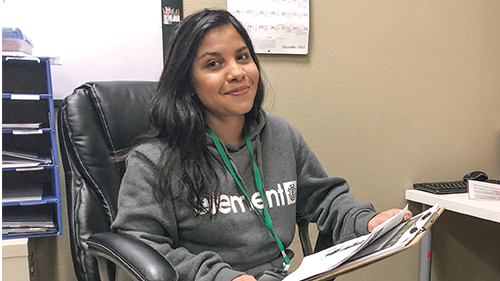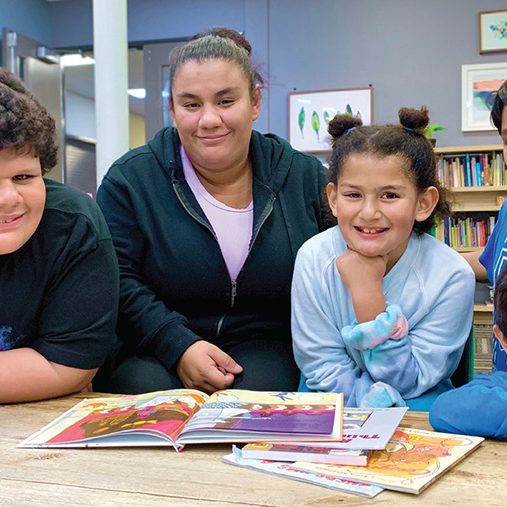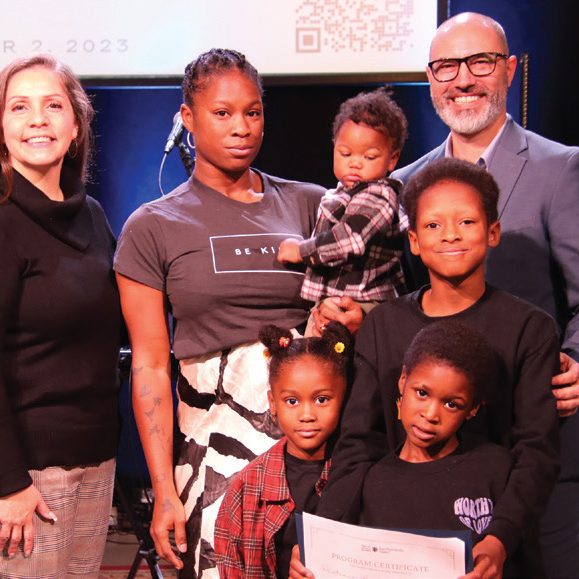Stories that Inspire.
Victories to Celebrate.
Tamara sees change, growth in children

When Tamara first started as an intern at the mission, she was surprised. “I had this idea in my head that a homeless shelter looks a certain way,” she said. “I thought it was maybe very busy, and it would be hard for clients to get the attention they need. It was very different from what I expected. When you walk in, it’s such a welcoming space. The staff members are very nice and welcoming and sweet. They do so much more than I expected. They focus on the clients being able to stand up on their two feet once they leave, not just providing what they need now.”
Tamara, who is graduating from CSUN in May, has been interning at the mission since August, and chose to stay another semester. “It’s very, very rewarding,” she said.
As a child development intern, Tamara organizes the children’s time. She may organize a coloring activity for the toddlers inside, and corral the teens and older kids in a basketball game outside. “Other than that, during activities, I observe the children and their behavior. I sometimes need to de-escalate a situation with the children.”
Tamara also works at an elementary school as a teacher’s assistant. “It’s very different,” she said. “We see a huge variation with kids. When I started interning here, I came in with the mentality that kids are kids, it shouldn’t be much different. But children experiencing homelessness do have externalizing behaviors more often. They take out their frustration through their behavior. They typically have more behavioral issues because of past trauma, which is totally understandable.
“We have children who are very mature for their age, and we have children who sometimes need a little more guidance than others. And when that’s the case, we jump in. That’s part of my job is to notice those things during their activities and play time. Then we talk to parents, and report it to staff and case workers.”
Tamara said it’s been inspiring to see major change during the kids’ time at the shelter. “Throughout the weeks they are here, we’ve seen a lot of improvement. We would have kids who would come in and aren’t able to have a routine, which often adds to their issues. At the shelter, there is a routine: a time to be out, to be at school, to be back, to be at dinner. There are certain times for activities. Having that routine and knowing they have to abide by it really helps them.”
Tamara said interactions between the kids often improve, as well as tantrum throwing. “They aren’t really good at emotional regulation,” she said. “Here there are people who can actually work with these kids. They give them the time to work through their tantrums patiently, talk to them and make them understand that it’s OK to feel that way, but that’s not how we deal with it. Over time, when they hear that consistently, they don’t have as many tantrums. It’s one of the more noticeable differences.”
Having other adults around, and even high schoolers from volunteer groups, has helped the kids too. “They have people they can share things with and look up to for guidance. … Just knowing that they are safe has a big effect on the children’s behavior.”
Be Inspired
Be Transformed
Stay connected with the good work the Mission is doing, and learn more about the people we help.



